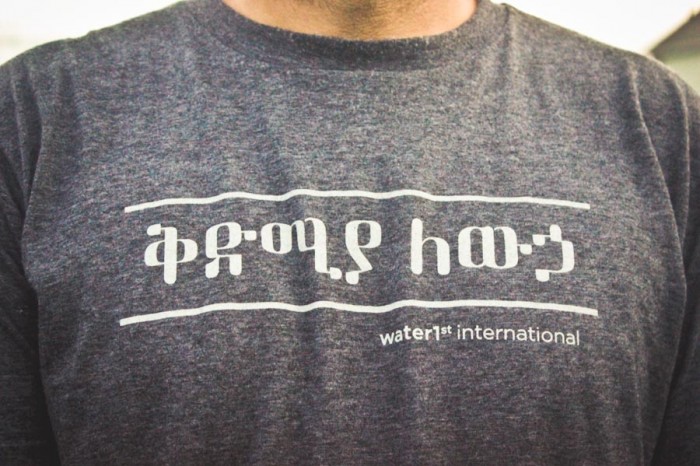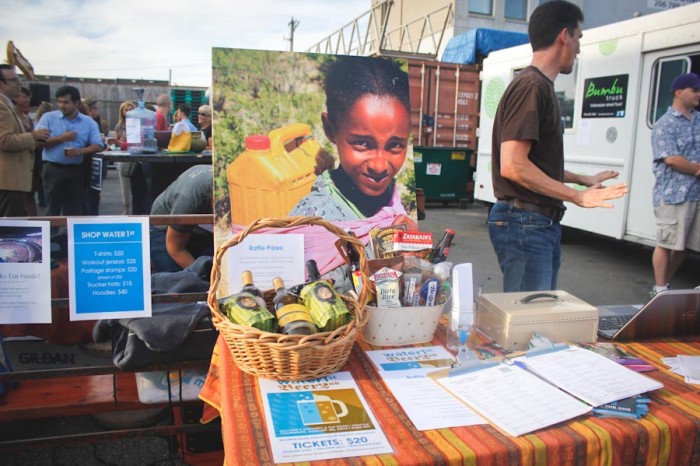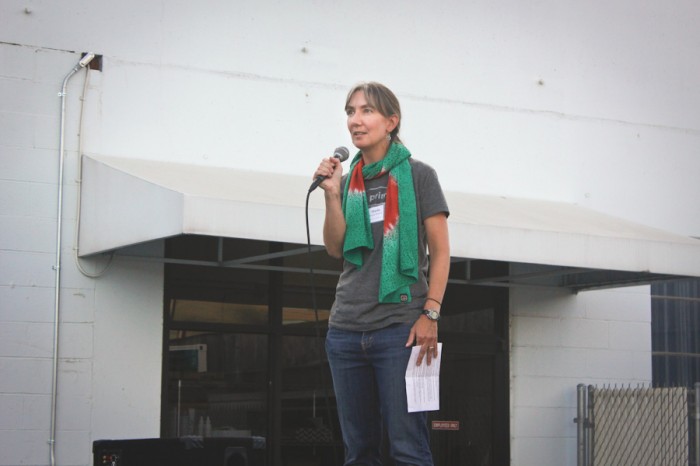
A courtyard filled with beneficent Seattleites greeted me at Hilliard’s Brewery in Ballard last Thursday for Water 1st, Beer 2nd — an annual fundraising event put on by a local non-profit Water 1st International.
Working in rural (and some urban) communities in Honduras, Ethiopia, Bangladesh and India, Water 1st has built 1,100 water systems worldwide impacting an estimated 116,000 people.
The organization’s impeccable international reputation drew me to the event. But I was surprised that I didn’t see many other Ethiopians in the crowd at Hilliard’s.
Water 1st Founder and Executive Director Marla Smith-Nilson tells the story of visiting Mexico as a teenager and witnessing a young woman struggling to carry large tank of water on her back. Since then, she’s made it her mission to solve the global problem of basic access to close and effective water systems.
But it’s not about going into these communities and assuming what their needs are. Smith-Nilson and the rest of the team realize that it’s about asking those communities what they need and taking action together.
“I think we have compassion, and I think that’s different than feeling sorry for them,” Nilson points out as she talks of the communities she works with.

As an Ethiopian American myself, I was curious to know more about how this NGO was working with Ethiopian communities in Seattle. According to Nilson, Water 1st has reached out to local members of an Ethiopian church and restaurant in Madrona to assist in fundraising efforts for an Ethiopian-themed event last year.
“Our outreach to immigrant communities has also been valuable when we need translations — we’ve had Amharic, Oromo, Bengali, Spanish speakers in the office to help us transcribe interviews and documents,” Smith-Nilson says explaining some of the current connections the organization has with their community counterparts.
But Senait Tilahun, a young Ethiopian community leader in Seattle, expressed her wishes that aid organizations like Water 1st would do more to reach out to the thriving Ethiopian population in the Northwest.
“I would like to see these organizations be more visible in the respective communities so that they can work and collaborate together,” Tilahun said.
She says that in many cases local NGOs working in Ethiopia would benefit from greater attention to and investment in the immigrant community right here in their backyard.

Are aid organizations missing out on an untapped market of Ethiopian Americans who would be interested in giving back to the very cities and towns that their families immigrated from? Maybe.
But Smith-Nilson suggests there may also be a sort of parallel system of aid running from those communities back to their home countries.
“I think many Ethiopian immigrants are probably involved in supporting family members or organizations in their birthplace where they have a personal/direct connection,” she said in a follow up email after last week’s event. “So I don’t think they are necessarily looking to become involved with Water 1st as an outlet for their charity.”
And perhaps the responsibility doesn’t rest solely on the NGO to make that initial step. What about the responsibility of young leaders and professionals in those communities, like Tilahun herself, to create their own campaigns the way Smith-Nilson did, or to help raise awareness amongst their peers about the benefits of groups like Water 1st?
As Nilson mentioned, it is important to understand the needs of overseas communities before stepping in. If that same effort toward mutual understanding could happen right here in Seattle, the possibilities for change would be overflowing.
For more information about Water 1st, visit their website www.water1st.org.


All what you posted is alright. But I wish just to comment that Ethiopia has no one official language. Amharic is just a working language not the ” the Ethiopians official language” it just like any others viz, dawro, silxee, kunama…
Great story. The global development sector (internationally and in Seattle) has great potential to engage with immigrant communities and could be highly successful if approached the right way. Migrant hometown associations are one way the U.S. has seen its immigrant communities give back to their countries and fund community projects. Would be great to see a scale-up of this.
Brings up great ideas to consider. How does a group of people assimilate into a new society but still manage to emotionally cling onto the place they came from enough to reach out to them? They’d need an extra set arms… one for reaching/exploring your new home enough to get grounded, while finding the resources and still reaching back to where you came from to extend those resources to them.. We ask a lot of our immigrants. Thanks for posting this!